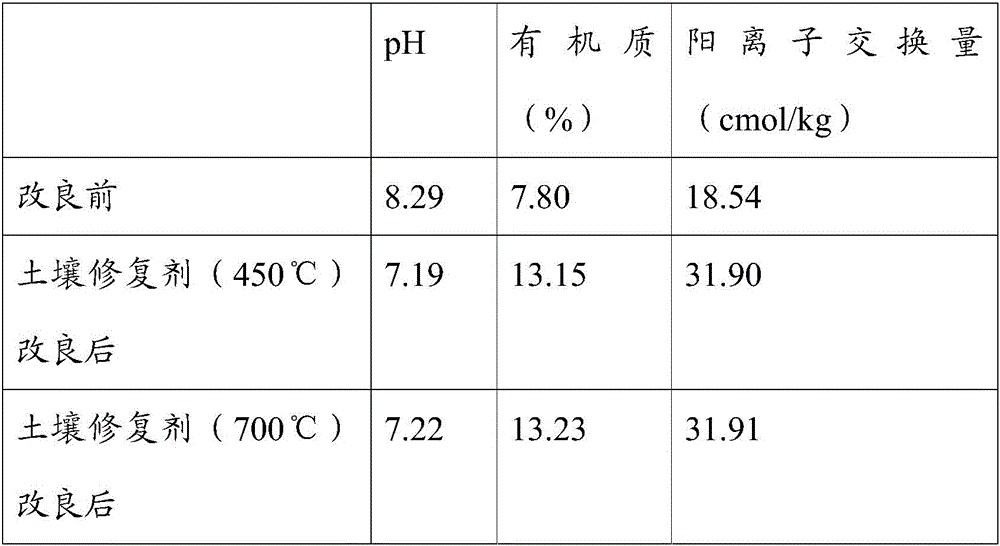Method for resource utilization of desilting sediment
A resource utilization and bottom sludge technology, which is applied in the direction of pyrolysis treatment of sludge, restoration of polluted soil, solid fuel, etc., can solve problems such as not seen, and achieve the effect of enhanced adsorption performance
- Summary
- Abstract
- Description
- Claims
- Application Information
AI Technical Summary
Problems solved by technology
Method used
Image
Examples
Embodiment 1
[0027] see figure 1 , the present embodiment provides a method for resourceful utilization of dredging bottom mud, first, drying the dredging bottom mud and mature aquatic plants respectively, and drying the dried dredging bottom mud and the aquatic plants The plants are respectively crushed to a particle size of less than 1 mm; then, the crushed dredged bottom mud and the aquatic plants are fully mixed in a mass ratio of 1:4 to obtain a mixture; then, the mixture is subjected to anaerobic conditions Biochar is obtained by pyrolysis at 450°C (the organic pollutants contained in the dredged bottom sludge do not exceed the standard) or 700°C (the organic pollutants contained in the dredged bottom sludge exceed the standard) for 1 hour; finally, the biochar is sequentially heated with 0.5 mol / L hydrochloric acid solution and water washing to obtain activated biochar, and the activated biochar is a soil remediation agent.
[0028] No soluble heavy metals or organic pollutants wer...
Embodiment 2
[0032] Two kinds of soil remediation agents obtained in Example 1—soil remediation agent (450° C.) and soil remediation agent (700° C.) were used for soil improvement, and the dosage was 5% of the dry weight of the soil to be remediated. The physical and chemical properties of the soil were measured one month later. The properties of the soil before and after improvement are shown in Table 1 below:
[0033] Table 1 The physical and chemical properties of the soil before and after the soil restoration agent improved soil obtained by the present invention
[0034]
[0035] Through the comparison of the above examples, it can be found that the dredged bottom sludge and mature aquatic plants are dried and pulverized respectively, fully mixed according to a certain ratio, and biochar is prepared by high-temperature pyrolysis under anoxic conditions; the prepared biochar is activated by acid Become activated biochar, i.e. the soil remediation agent of the present invention. The ...
PUM
 Login to View More
Login to View More Abstract
Description
Claims
Application Information
 Login to View More
Login to View More - R&D
- Intellectual Property
- Life Sciences
- Materials
- Tech Scout
- Unparalleled Data Quality
- Higher Quality Content
- 60% Fewer Hallucinations
Browse by: Latest US Patents, China's latest patents, Technical Efficacy Thesaurus, Application Domain, Technology Topic, Popular Technical Reports.
© 2025 PatSnap. All rights reserved.Legal|Privacy policy|Modern Slavery Act Transparency Statement|Sitemap|About US| Contact US: help@patsnap.com


